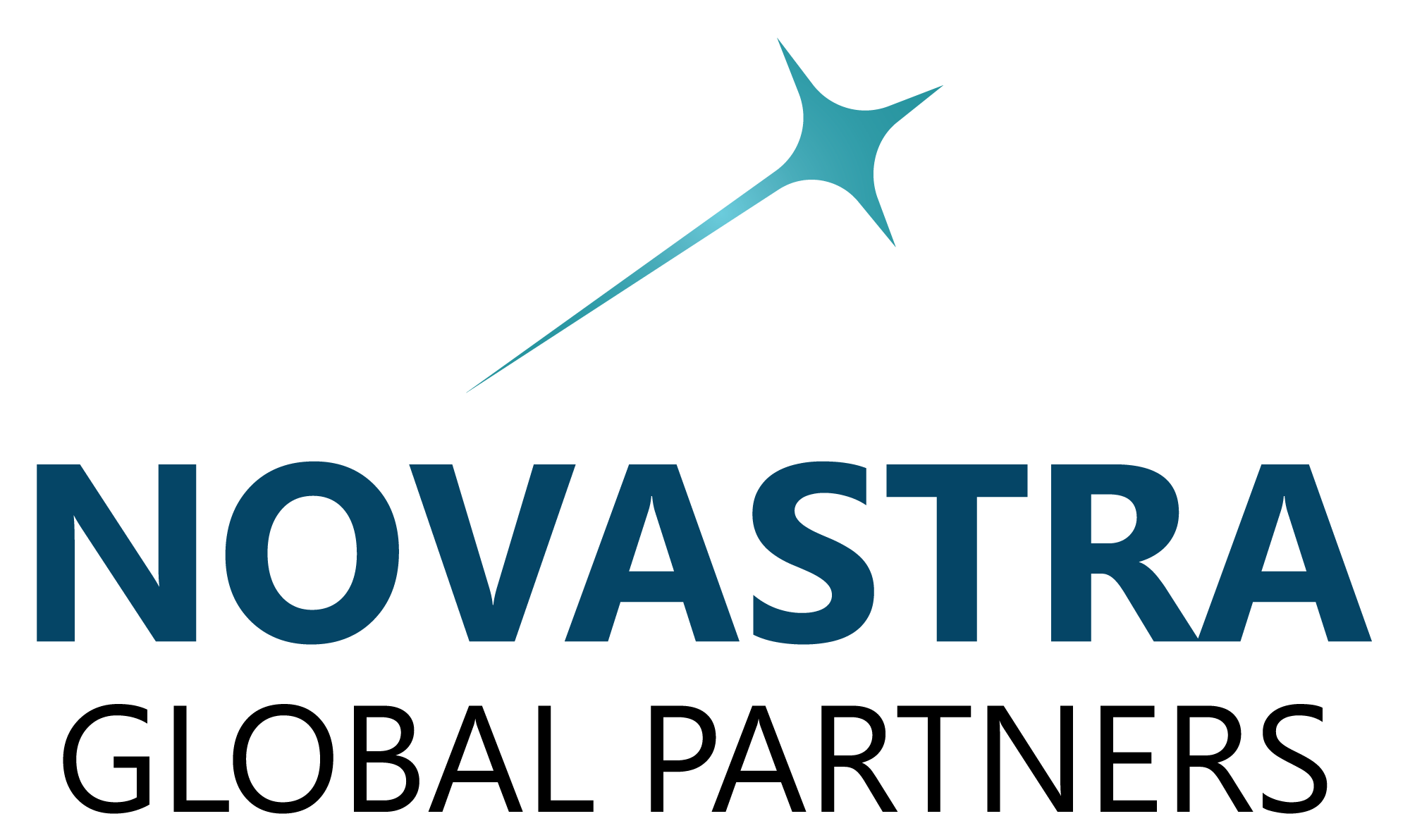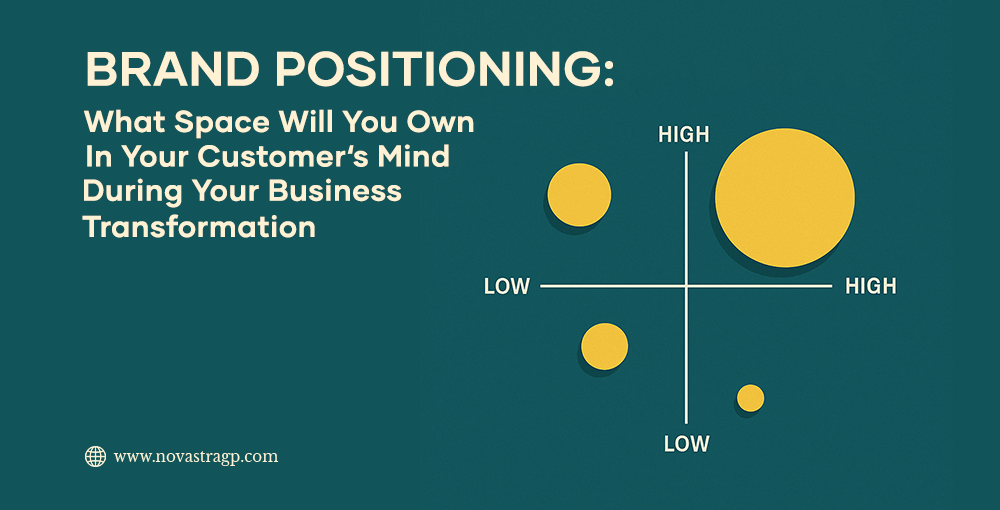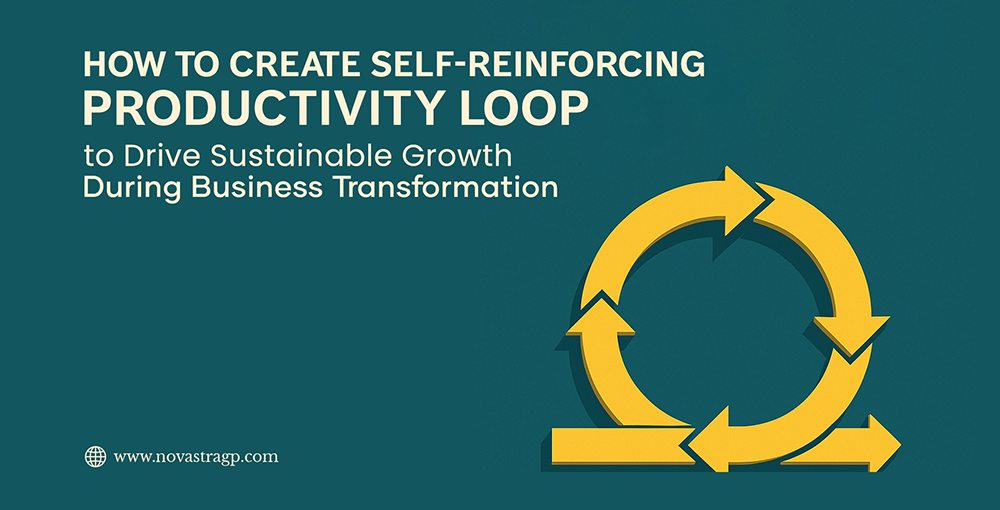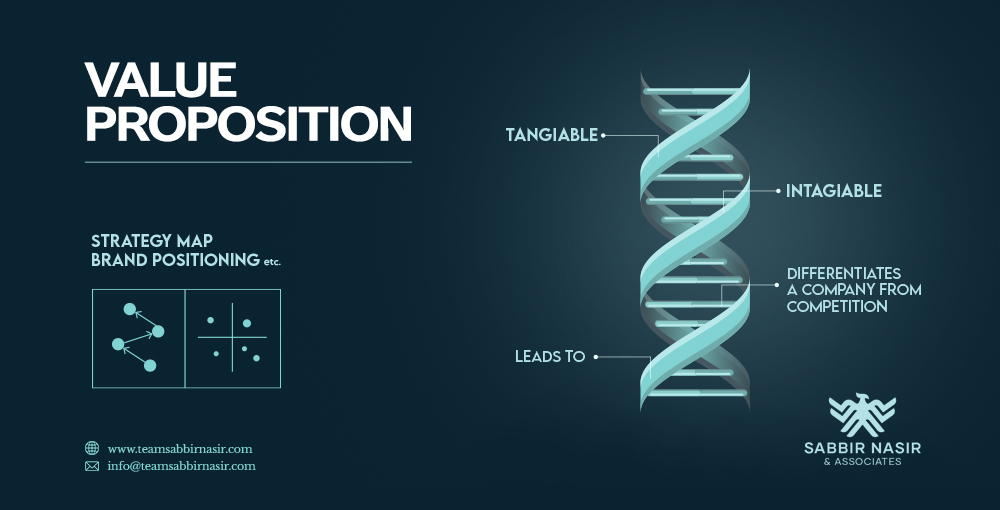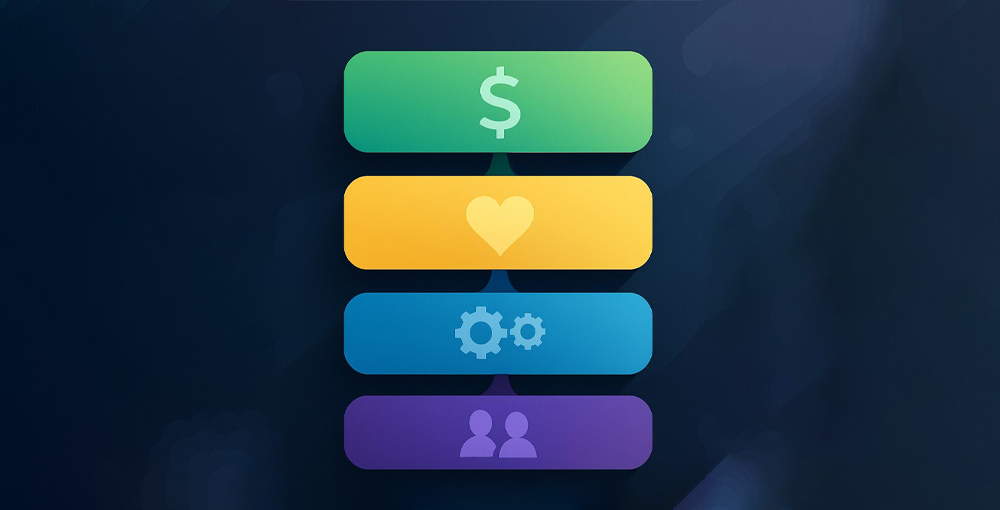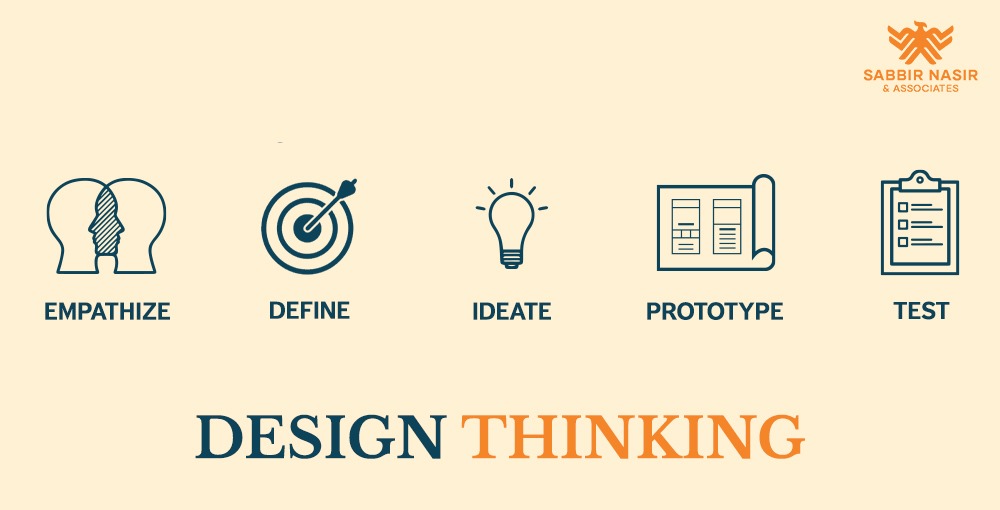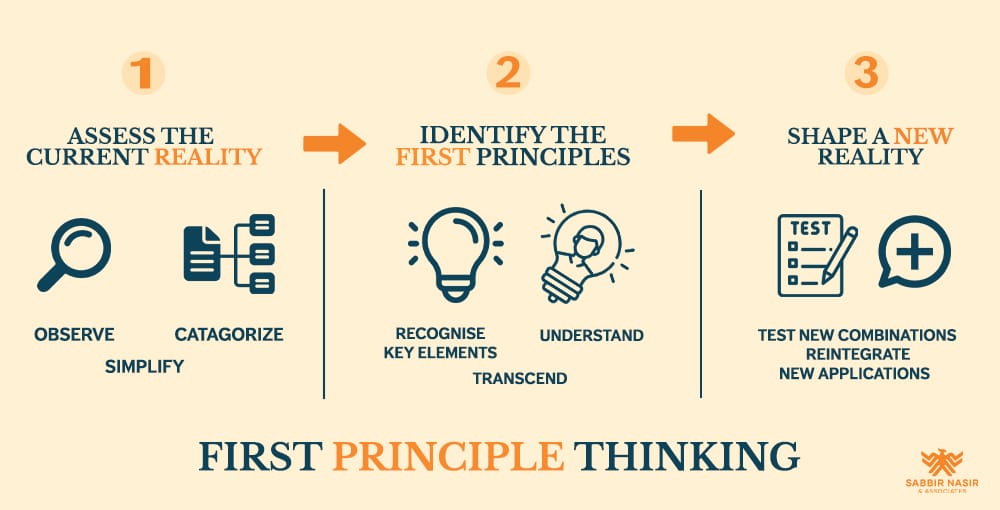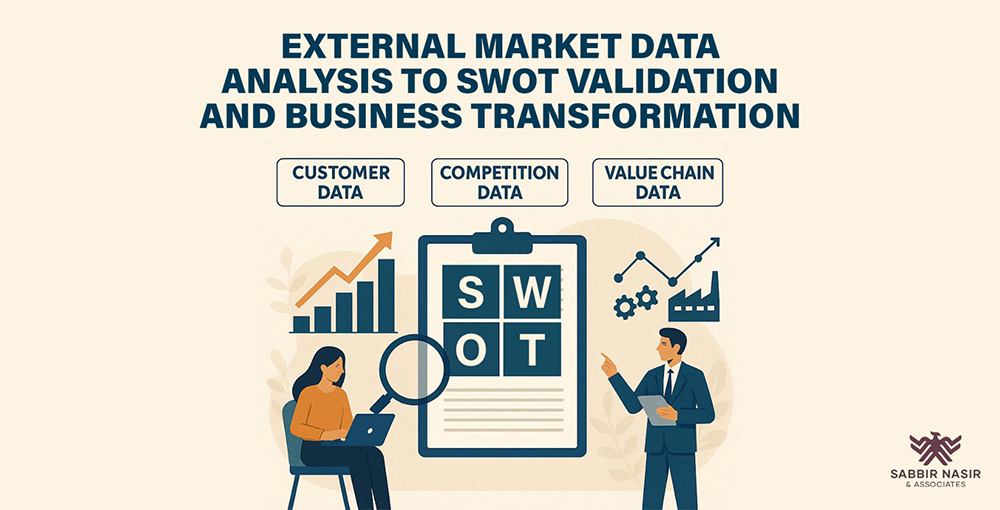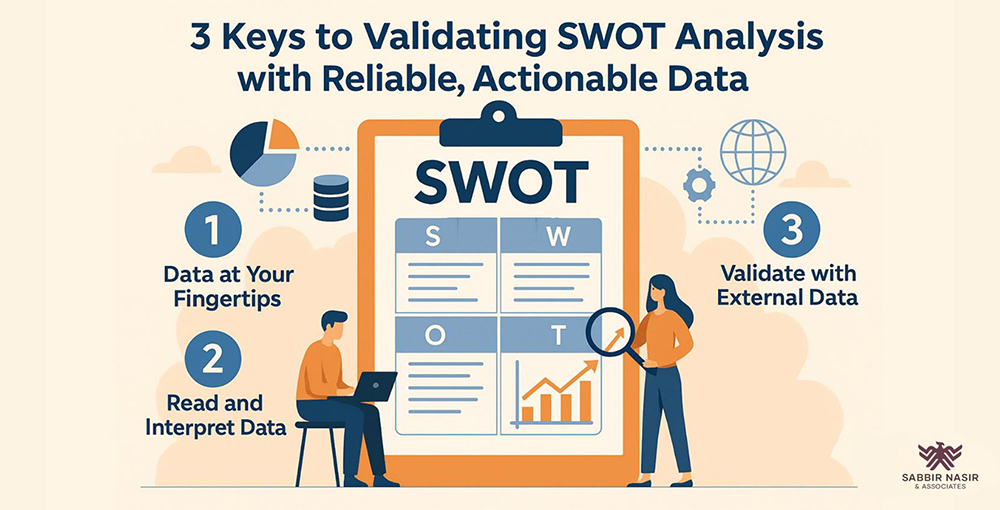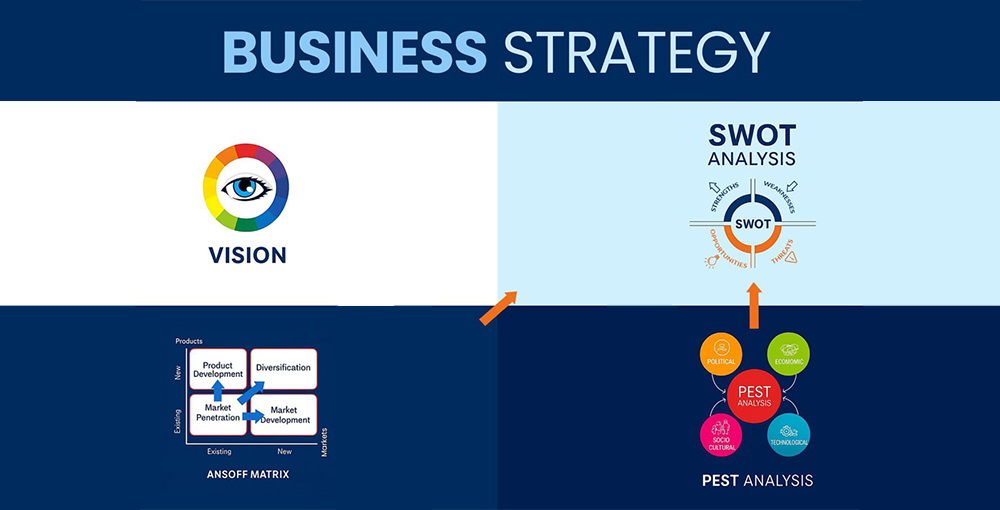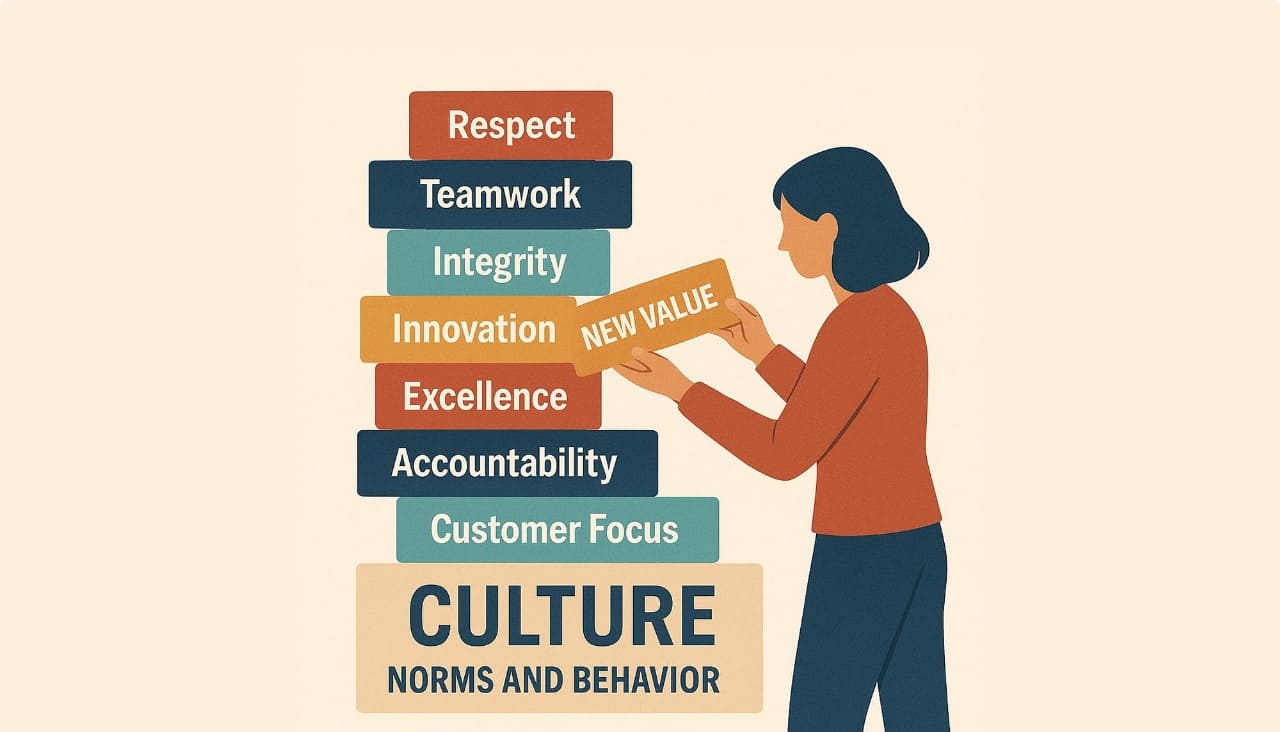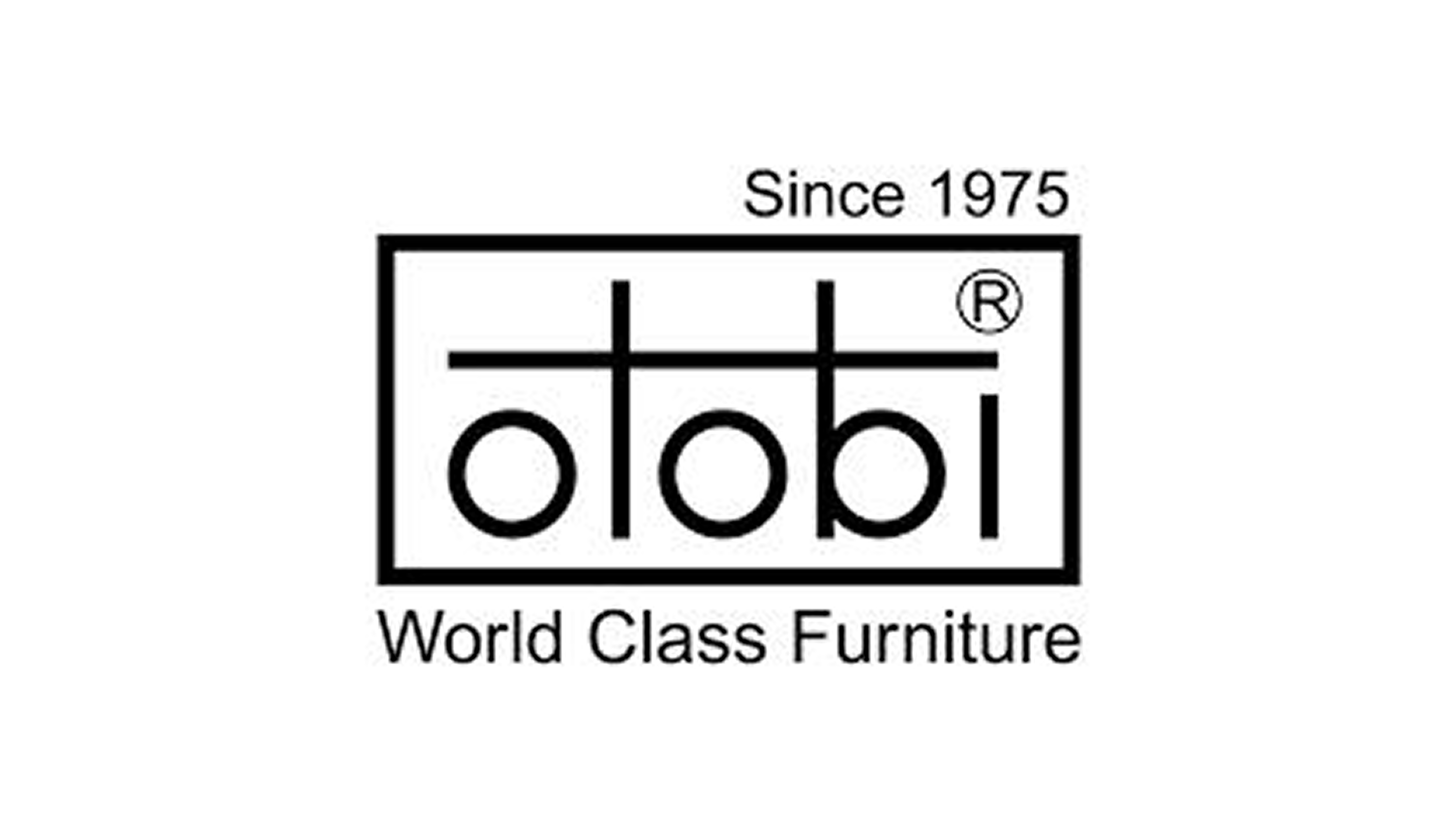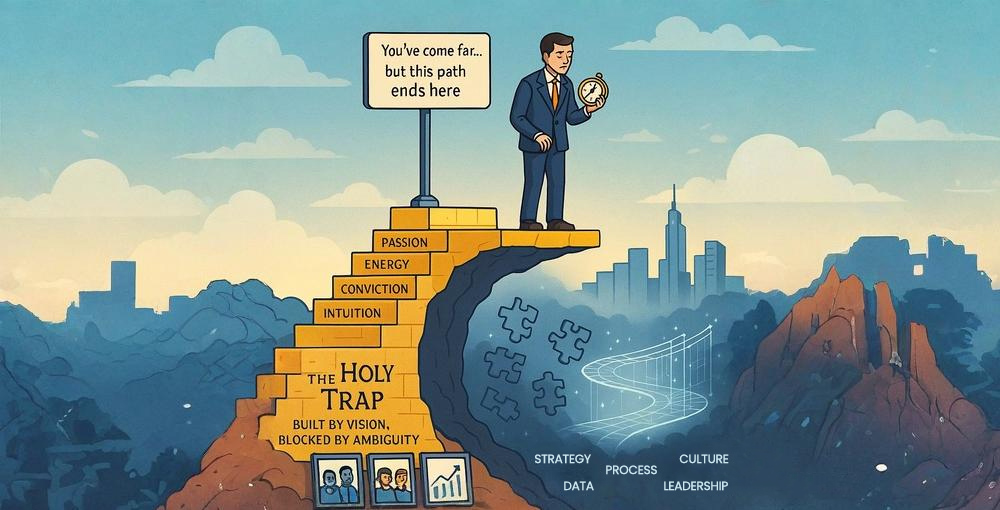How a Holistic Fact Sheet Provides a Roadmap for Action to Support Business Transformation

Summary: A holistic fact sheet lists issues facing your company and their causes, and a deeper narrative that provides full context and engages stakeholders. In this article, we’ll explain how a holistic fact sheet is created, the purpose of a holistic fact sheet, and how to apply first-principle and design thinking to solve problems.
In previous articles, we discussed the importance of gathering both internal data and external data (customer, competition, value chain) to validate strengths, weaknesses, opportunities, and threats (SWOT) analysis with evidence. This is a critical final step in the Articulate phase of the Sabbir Nasir Transformation Framework (SNTF).
Next, we move to the Discover phase of the SNTF. This phase involves:
Bringing together internal data and external data.
Identifying issues and their root causes across the organization.
Creating a holistic fact sheet.
Applying first-principle thinking and design thinking to address pain points effectively and inform ideas for growth.
At this point, the founder’s vision has been clearly articulated. To achieve that vision in the future, you have to get through the present and solve today’s problems. That’s what the Holistic Fact Sheet is designed to do.
Let’s explore these concepts in more detail.
What Does Your Data Say About Your Company?
I typically start by reviewing critical financial data from the financial statement, the balance sheet, the profit and loss statement, and the cash flow statement. This will give me a sense of the company’s health and important issues they may be facing right now.
Data is like a medical diagnostic report. You might know the symptoms, but we need to get to the root causes of problems. Instead of x-rays and MRIs, I’m looking at financial ratios and operational KPIs. Instead of doctors, I’m talking to leadership, teams, financial institutions, strategists, marketers, and board members.
Every founder or CEO has a list of things that bother them – things that aren’t going well. Some can be small, even petty. It’s important to get these issues out in the open so they can be resolved. In addition to speaking with senior leadership, I need to hear from teams at all levels of the organization to understand what challenges they’re facing.
Digging into financial, operational, and marketing data, as well as the concerns of individuals across the organization, will help us develop a robust holistic fact sheet.
What Is the Purpose of a Holistic Fact Sheet?
Once all issues have been identified and listed, and the data, ratios, and KPIs begin to make sense collectively, I take a similar approach to the SWOT analysis. I rank the issues and craft a narrative around them based on facts and data. This provides important context and engages stakeholders intellectually and emotionally.
We then apply what we’ve learned from internal and external data and a wide range of stakeholders to create a holistic fact sheet, which lists the issues and challenges facing the organization. This forms a baseline for the founder or CEO and me to address.
What is the most pressing challenge right now? What can be resolved in one year, three years, or five years? Urgency and importance will vary so we need to address the most impactful issues first. These are the questions your holistic fact sheet will begin to answer.
A Real-World Example of Identifying Issues and Creating a Holistic Fact Sheet
I led the business transformation of Otobi into the top furniture retailer and manufacturer in Bangladesh. The company’s holistic fact sheet was an essential resource during that process.
The company’s financial position was strong in terms of debt-equity ratio, assets, receivables, and margins. But growth had slowed.
Deeper exploration uncovered a number of key issues that needed to be addressed:
Demand was there, but the company lacked balanced production lines and proper warehouse space.
Increasing margins by sourcing raw materials (wood logs or dust) was not possible because they did not own land with those resources.
Competitors were copying our designs and charging lower prices, and we had no marketing strategy to differentiate our products.
We weren’t tapping into the home market for wooden and laminate furniture.
Internal conflict among different generations stifled innovation.
Product design was limited to just two people, one of whom was the founder, which led to scaling issues in product pipeline development.
Not enough products with meaningful differentiation were coming into the pipeline.
Issues, financial ratios, and operational data were grouped together to create a narrative that formed the foundation of the holistic fact sheet.
Applying First-Principle Thinking and Design Thinking to Move Forward with Business Transformation
What Is First Principle Thinking?
Elon Musk is a top proponent of first-principle thinking. This problem-solving method separates complex problems into their most basic components to understand each component’s value and cost. Solutions are then built from the ground up to drive growth and innovation.
What Is Design Thinking?
Steve Jobs preached design thinking, which begins with empathy for the customer. He was always focused on designing solutions based on a deep understanding of their needs, pains, frustrations, and aspirations instead of relying on assumptions.
A Real-World Example of Applying Both Approaches to Solve a Real Problem
Consider a recent challenge faced by Shwapno, the top grocery retailer in Bangladesh. The data showed that beef sales were going down. We spoke to customers who said that the hyperinflation caused by the ban on cow exports to India made beef unaffordable.
The holistic fact sheet enabled us to trace the issue from geopolitics and supply chains to consumer affordability.
We learned that Shwapno customers ate a lot of vegetables and carbohydrates but needed more protein, especially for their children. We asked how much beef a family of four will typically consume in one meal.
That’s design thinking – empathizing with the customer to understand their pain points and explore ways to address them together.
At the time, beef and potatoes were sold separately. Beef was sold in 1kg portions, which was standard for the industry. But middle-class families didn’t need 1kg of beef.
To make meals more affordable and balanced and reduce waste, we broke the 1kg market rule for beef. We cut beef into smaller sizes and created combo packs with potatoes. This would provide consumers with the right amount of food at a reasonable price.
That’s first-principle thinking. We assessed the situation, designed a costing process, regrouped the components, developed a new product, created a value proposition that suited the market, and scaled the model.
After launching these combo packs, beef sales increased by 50%.
Maintaining and Updating your Holistic Fact Sheet
As the business evolves, issues will change based on internal challenges, external market conditions, new data, and new customer behaviors and preferences. Change is constant and often unrelenting.
Your holistic fact sheet should be considered a living document that adapts with your business needs and customer needs. And it’s a valuable resource that shows where you stand now and how to move forward to achieve true business transformation.
